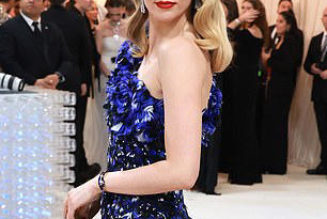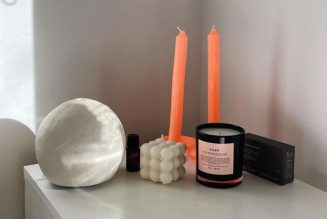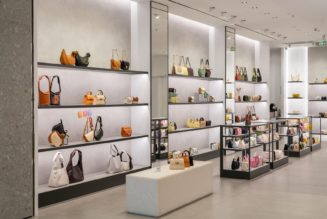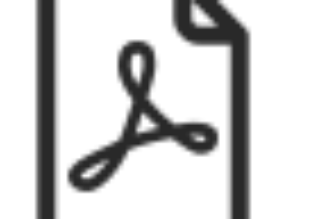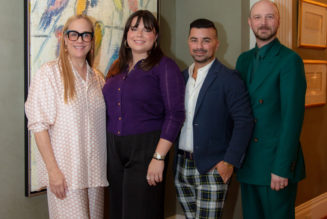
One of the reasons Justin Jacob Louis — founder of the streetwear label Section 35 — launched a luxury line is simply that there’s a need. He debuted his eponymous label at New York Fashion Week on Sunday and says he was inspired partly by Indigenous celebrities asking him to dress them for the red carpet.
NYFW was not the first time Louis has shown internationally, and for him, presentations have multifold importance. “When I first started designing, I didn’t feel like I belonged on the runway, and there was a little bit of self-doubt in that. But now I’ve kind of realized that the runway and showcasing is really a place where you can put your work out there. It kind of expands your creativity,” he said. “Being able to take our clothing and our community and our culture and all of these things that make us Indigenous, and bring that to the world — it’s special. It’s good to show that we’re here; we’re still alive and we’re thriving. And we make really cool stuff too.”
Fresh off his show, Louis sat down with CBC Life to discuss the impact of showcasing internationally, the demand for Indigenous fashion in this moment, and his approach to luxury. The interview has been edited for length and clarity.
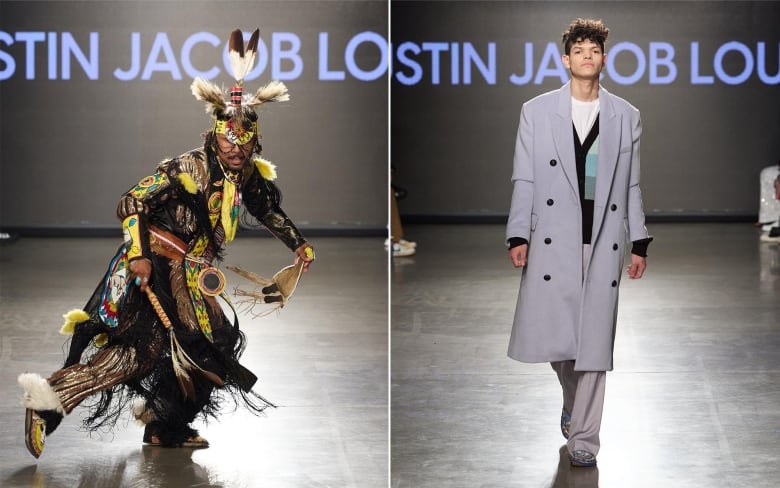
What does showing your collection in one of the Big Four fashion capitals do for your label that can’t be done in Canada?
Wanting to be part of New York Fashion Week — for me, it was a bucket list [item] to be able to say, “I made it to New York.” It’s one of the biggest fashion hubs in the world, you know. I think the exposure is different down here. You can get exposure in Canada too, but it’s a whole different market, right? I just think it opens you up to a broader audience.
What does it do for Indigenous fashion as a whole?
People don’t know what Indigenous fashion is — they didn’t even know there was Indigenous fashion. So it’s opening people’s eyes that are maybe not aware of what’s happening in our communities creatively. People are seeing what our people are doing for the first time. Hopefully, [it continues] to open doors for more people like myself to come and showcase what we’re doing.
Were there any industry opportunities and supports, Indigenous or otherwise, that were key to getting you to this point?
One hundred per cent. The community that supports us and supported my work allows me to do it, first off, because, you know, they’re buying my clothes. But the organizations, like Vancouver Indigenous Fashion Week [and] Indigenous Fashion Arts in Toronto, who bring people together and create these platforms for artists like me — I think those are some of the people that I look at, that make what we do possible, who have helped get us to where we are, right? So I’m very thankful for people like Sage Paul, and Joleen [Mitton] from Vancouver Indigenous Fashion Week, who do that work and elevate our people.
Could you describe the process of creating this collection?
The concept actually started a couple years ago and really looking at old photos from, you know, like my ancestors and other people. Seeing our people dressed in really nice coats and three-piece suits, with their hair all braided, you kind of get that concept of town clothes. Like you wear your nice clothes to go to town, right? And so [I wanted] to create something [so] we can dress up and look nice. And then from there, it just kind of was like, OK, what do I envision in a first collection? And it’s like, you know, I love knitwear. I thought a lot about my homelands and my community and my culture, and how can I weave that into something that’s new and fresh, but also sustainable — like made in Canada, you know? How can we improve, you know, what we do as a business? Because fashion is one of the [most] wasteful businesses in the world, and so I’m always thinking of how can we be part of the change.
What is quintessential Justin Jacob Louis?
For me, every outfit starts with a coat. I put a lot of thought into coats and then I build my looks around those coats.
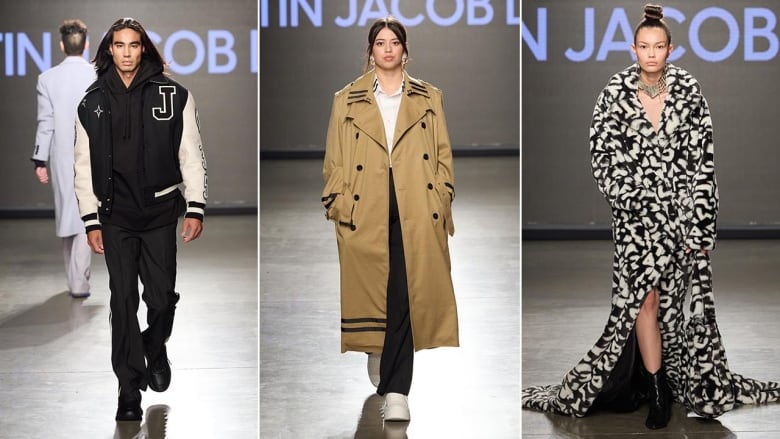
Can you tell us a bit about what inspired this new collection and the birth of a new line?
[We’re] starting to see our own people on the red carpet in Hollywood, you know, and I get a lot of people asking me to dress them. And I’ve never really had a lot of stuff that is more dressy, for red carpets. So I thought that was something that would be really cool to do is to create pieces that people can wear to a nice night out. The first collection is obviously launching in fall [2024], so it’s very winter-oriented — warmer clothes, knitwear. A lot of the graphics have meanings to them as well. Some of the visuals actually came just from a dream that I had. The knit turtlenecks have a silhouette of my great-great-great-grandpa. So, like, there’s very personal elements that I’m weaving into this stuff. And a lot of the inspiration, it’s very personal to me. I mean, it carries my name, so I’m bringing a lot of myself into that, right? I followed my intuition. It just felt right doing this.
A luxury label’s practices are what sets them apart, among other things. What are some of the practices you’ll have in place for this line?
The sustainability piece is one of the guiding things [for] this label — made in Canada, local production, you know — but also just the concept of Indigenous values, bringing those values into how we operate and design and create. And then sustainability is part of that because of the responsibility we have for the environment, right? So making sure those are front and centre of everything we do.
Could you explain how sustainability ties into Indigenous values and practices?
We’re raised to leave the Earth better than we got it, right? We have to think generations ahead: what are we leaving for our future grandchildren? And so, being mindful of the impacts that the fashion industry has on the environment — it kind of goes hand in hand with our values of taking care of the Earth and taking care of our land and our waters and all of that stuff. Community is another value, you know, being mindful, working together with people. Last night, it was [about] community, right? We brought dancers, our friends and models from all over. The show couldn’t happen without everybody coming together for the common goal, right? And so, pulling in the same direction.
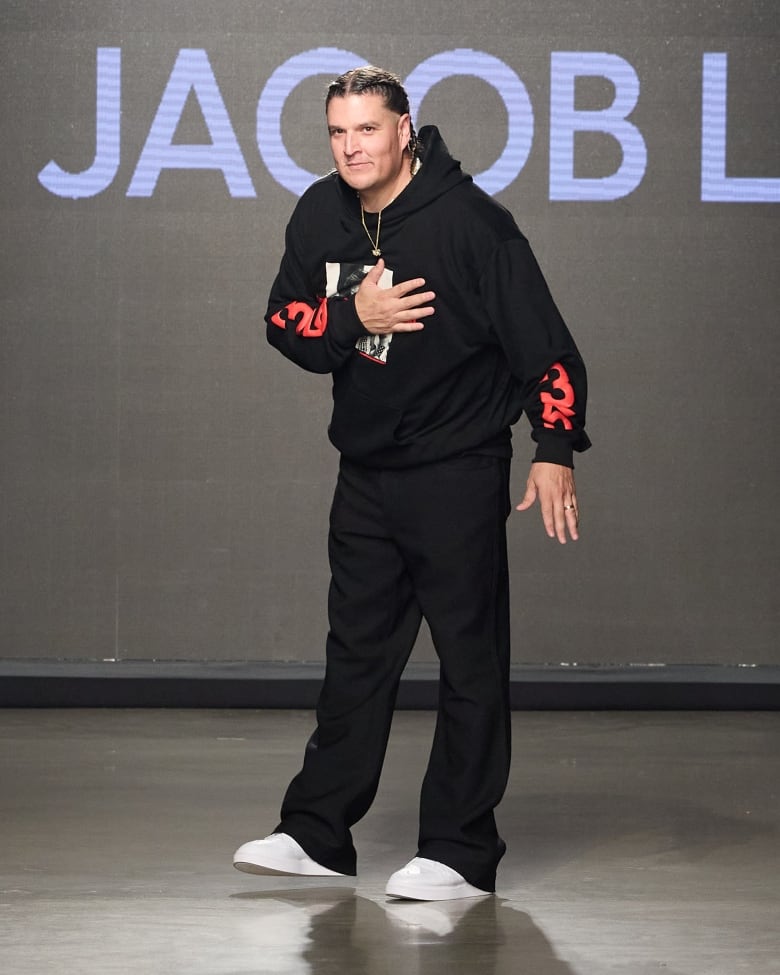
Why is this brand needed right now, especially in the Indigenous fashion landscape?
I think it’s about continuing to elevate our people and our art and our work and creating space for everybody to come in because there’s a whole community — it’s not just me out there. There’s so many designers that are doing amazing work, and people don’t know about them, right? And we all deserve to be seen, and our work is amazing. I just think the fashion industry has appropriated so much of our stuff for so long, and it’s time that they actually see what’s authentic Indigenous design and fashion. We don’t need people stealing our stuff; like, we can do it ourselves. Here it is, and it’s authentic. There’s a story, there’s a meaning to it, right? A lot of it’s more than just fashion — it’s storytelling. It’s our living history happening right in front of us.

